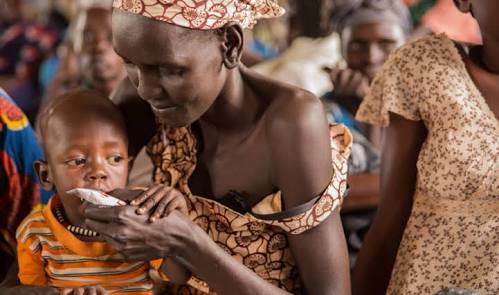In our world, superstition is still alive and kicking. Even with advancement in science and technology, it won’t be hard to spot many who still take a simplistic approach to events they would have otherwise subjected to rational enquiry. In African States where a great number of people still depend on dibias and babalawos for good heath, this might as well be more pressing. It is easier to attribute growth retardations, foetal deaths, body malfunctions, mental retardations, speech defects, deafness, early and late hearing and visual loss, cognitive deficit, learning disability, and many of such anomalies in children as a curse. Most times, autopsy is frowned at or simply thought as unnecessary. God has given; He has willed to take. However available data suggest that pathologies of these infirmities that could have easily be termed supernatural can be defined. Most of them are diseases and infections transmitted to the child in the womb through the placenta or during delivery. They are what we know today as congenital infections.
Congenital infections are medical conditions which are present before or at the time of delivery and are generally caused by viruses transmitted to the child from the mother. Although some of the conditions occur due to some genetic mutations (which increases with advanced maternal age, generally defined as ≥35), most of these conditions are caused by congenital infections.
The most common cause of these congenital infection is Cytomegalovirus (CMV), others include Rubella, Toxoplasmosis, Herpes virus, HIV, and Syphilis.
Cytomegalovirus (CMV) belongs to the sub-family (ᵝ-herpesviruses) of herpes virus. Their infection is common in human. In immunocompetent (strong immune system), they mostly do not show any symptoms, but cause multi-organ disease in foetuses, neonates and patients of all ages due to weak immune system.
The danger is that the mother may be asymptomatic (without any symptom of the infection) due to strong immune system to fight infections but will transfer the infection to the infant who is immunosuppressed (weak immune system to fight infections). Mothers most commonly transmit CMV to the infants through breast feeding.
Most infants (90%) are asymptomatic at birth. 10% are symptomatic with clinical signs and symptoms, such as
– jaundice
– growth restrictions
– microcephaly (an abnormally small head at birth due to brain growth failure)
– hepatosplenomegaly (enlarged liver and spleen)
– Petechiae (a small spot on skin or an organ caused by bleeding underneath the skin). This spot may be found on many people.
– thrombocytopenia (decreased blood platelets)
– Seizures
– Poor feeding
– Mental retardation
– Deafness
– Prematurity and many other less common clinical manifestations like hydrocephalus (swollen head), haemolytic anaemia, pneumonitis (inflammation of the lungs).
Some of these manifestations (called symptoms) can be visually seen on the infant, and some (called signs) are only noticed by the doctor after a medical test.
Any treatment available?
These conditions can have a long term disability in infants when untreated. Sometimes even after the disease has been treated, the disability will still occur due to the damage to the foetus during pregnancy.The disease can be diagnosed prenatally or postnatally through foetal blood sampling, amniocentesis, ultrasonography (prenatal diagnosis), microbial test on urine and saliva(postnatal diagnosis). Neonates that acquire CMV in the utero shed virus in urine and saliva before three weeks of age while those that acquire it during birth or from breast milk shed the virus after three weeks of age. Treatment is usually done with intravenous Ganciclovir and a long-term oral Valganciclovir. Every decision concerning the diagnosis and treatment should be made by a licensed physician.
Who should care about this?
All women, especially pregnant women should watch out . It is common among rural dwellers to go to the hospital only when down with infirmity, when the disease stage has advanced. This sometimes results in poor prognosis. It is important that frequent screening and medical check-ups are in at least every three months. Pregnant women should undergo immunisation and screening, at least there are Health Centres that can offer these services. There is no approved vaccine for CMV yet, but vaccines are being developed and tested.
. It is common among rural dwellers to go to the hospital only when down with infirmity, when the disease stage has advanced. This sometimes results in poor prognosis. It is important that frequent screening and medical check-ups are in at least every three months. Pregnant women should undergo immunisation and screening, at least there are Health Centres that can offer these services. There is no approved vaccine for CMV yet, but vaccines are being developed and tested.
Most importantly, it is pertinent to appreciate that every disease has a cause and not necessarily a curse. Medical check-ups and screenings are vital to everyone whether male or female. Most diseases can be detected during screenings even when one seems healthy with no harm. This early detection will reduce the burden the illness would have caused if advanced and will also reduce financial cost for treatment.
– Onuike Godwin Ugochukwu, 2019




10 comments
Good, so enlightening
Thanks for the comment Sandrine
Great, This is awesome.
Thanks for the comment
This has totally changed my mind. Thanks to the writer
Frank, Thank you for the comment
Great write-up!
Thank you for your comment
interesting
Thank you for your comment